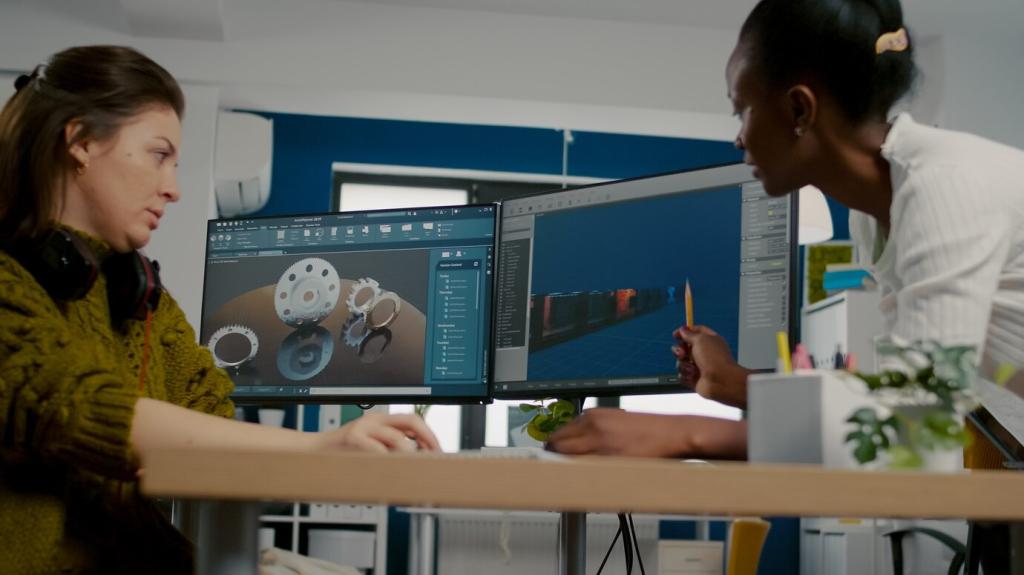Innovations in Façade Technology: Shaping Smarter, Greener Building Skins
Chosen theme: Innovations in Façade Technology. Explore how adaptive materials, data-driven design, and energy-harvesting envelopes are transforming cities. Subscribe for deeper dives, share your project stories, and help map the next frontier of façades.
Responsive and Kinetic Façades
Tint-on-demand glass cuts glare and solar gain while preserving outdoor connection. One hospital wing reduced patient blinds use by 70%, improving circadian rhythms and staff satisfaction during long summer shifts.

Color-stable PV glass and opaque BIPV spandrels deliver clean energy without compromising aesthetics. A Swiss office achieved a striking black façade while offsetting lobby lighting and plug loads throughout most of the year.
Energy-Generating Façades
Design Intelligence: Parametric Models, Digital Twins, and Robotics
Performance-driven parametric design
Generative tools iterate façade patterns against daylight, glare, and energy targets. One team cut iterations from weeks to hours, aligning aesthetics with measurable comfort metrics before committing to a single physical mock-up.
Digital twins that learn in use
Live data streams from sensors feed a cloud twin, revealing drift in sealant performance and shading schedules. A campus used findings to retune controls, trimming cooling energy by double digits during late summer heatwaves.
Robotics and 3D-printed molds
Robotic milling of unitized panels and 3D-printed formwork enable complex geometries with repeatable precision. Factories report reduced offcuts, faster changeovers, and cleaner installations that help projects meet ambitious waste and carbon goals.
Comfort, Health, and Carbon
Daylight without glare
Prismatic layers, light-redirecting films, and tuned overhangs spread soft daylight deep into floorplates. Occupants describe fewer afternoon slumps, and sensors confirm higher useful daylight levels across collaborative zones throughout the year.
Embodied carbon and material choices
Recycled aluminum, low-carbon glass, and verified EPDs meaningfully reduce impact. One project saved thousands of kilograms CO2e by specifying secondary aluminum billets for mullions, without compromising strength or long-term durability.
Designing for disassembly and reuse
Reversible connections, product passports, and take-back programs prepare façade systems for multiple lifecycles. Tell us if your specs now require disassembly testing, and whether it influenced contractor bids or maintenance strategies.
Monitoring, Maintenance, and Safety
Moisture, temperature, and displacement sensors flag issues before they spread. One facilities team caught a hidden leak behind a spandrel early, avoiding tenant disruption and an expensive interior remediation cycle.
Monitoring, Maintenance, and Safety
High-resolution flyovers with AI crack detection accelerate assessments and reduce swing-stage hours. Share whether your jurisdiction accepts digital inspection logs, and how you integrate findings back into BIM for a continuous record.


Climate Resilience and Future-Proofing
Adaptive shading, tuned ventilation paths, and radiant-ready envelopes flatten peaks during heatwaves. A library avoided emergency closures by pre-cooling its thermal mass and adjusting façade louver angles during a record-setting week.
Climate Resilience and Future-Proofing
Pressure-equalized rainscreens, robust seals, and impact-resistant glazing defend against extreme weather. Post-storm forensics showed dry cavities and undamaged anchors where pressure equalization and drainage were correctly sized and tested.

